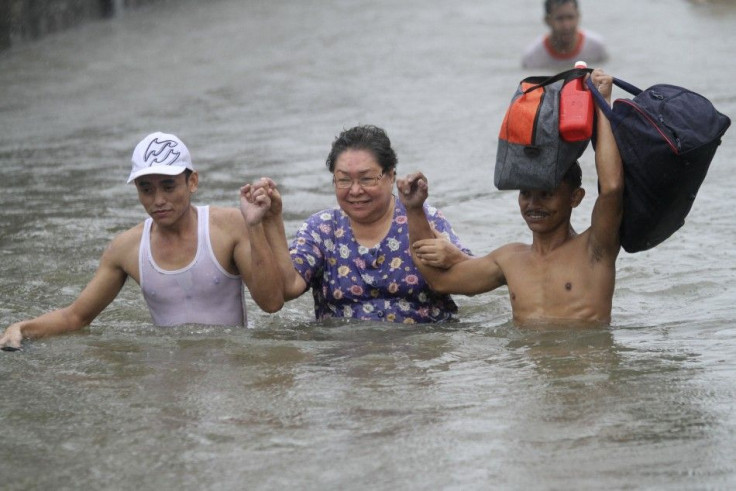Typhoon Nesat Damage: 12 Dead as Flooding Increases

Typhoon Nesat slammed the Philippines on Tuesday, flooding parts of the capital of Manila and killing at least 12 people nationwide.
With heavy rain and winds of up to 107 miles per hour, more than 100,000 people have left their homes to find safety. At least four fishermen are missing and more than 50 others had to be rescued after their boats capsized.
The storm hit the Philippines while moving east from the Pacific, making landfall in the provinces of Isabela and Aurora before moving inland toward the capital. The storm has dropped about an inch of rain each hour, swelling rivers, disturbing seas and flooding low-lying areas.
Typhoon Nesat, which is labeled Typhoon Pedring locally, came just one day after Manila commemorated the 500 people who died during a cyclone in 2009.
Current wind speeds and storm surge, which is the measurement of wave height, make Nesat a category-two tropical cyclone. The severity of a tropical cyclone is labeled according to the Saffir-Simpson Scale, which ranges -- low to high -- from category one to category five. Anything lower than category one, which begins at 74 miles per hour winds and a 4-foot surge, isn't considered either a hurricane or a typhoon.
Each category rises incrementally in both qualifiers, until it reaches category-five, which is designated by winds of over 156 miles per hour and ocean swells above 18 feet.
The government has suspended schools and urged people not to go to work in Manila. More than 45 domestic flights have already been cancelled or delayed and some 3,000 travellers have been stranded. The stock exchange was also closed.
The first deaths were recorded around 6 a.m. Tuesday. A one-year-old drowned in the province of Cataduanes after falling into a river, according to the country's disaster agency.
These types of large storms are seasonal, running almost exclusively between the spring and the new year, while the Philippines' geographic location often puts the island nation in harm's way.
So far, there have been a number of major storms across the world this season, including Hurricane Irene, which slammed the Caribbean and traveled up the East Coast of the United States.
Last week, Typhoon Roke grew into a category-two storm as it blew over Japan. The 100 mile per hour winds left 13 people dead before the typhoon moved toward the Kuril Island archipelago between Japan and Russia and then out to sea.
Nesat could blow off of the Philippines by Wednesday afternoon, although rains will continue in many regions.
© Copyright IBTimes 2024. All rights reserved.





















